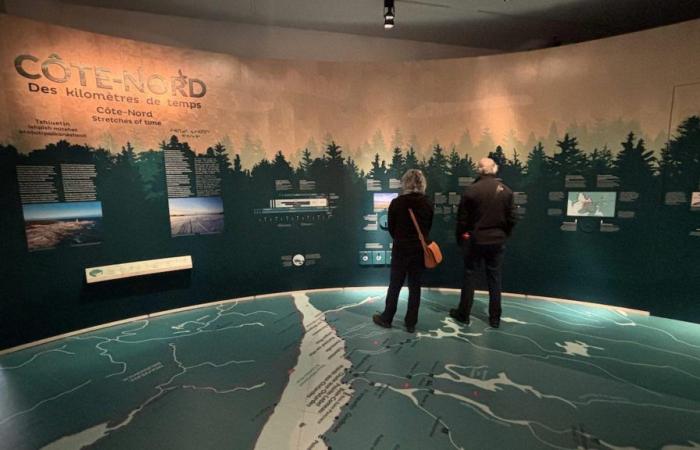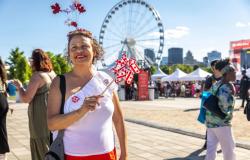How do you tell 9,000 years of North Shore history? That’s the question the team at the Côte-Nord Regional Museum spent three years pondering before unveiling its new exhibition, entitled North Shore – Kilometers of time. This project is an important milestone in the history of the Museum itself: it has been more than 18 years since the permanent exhibition had been renewed.
To go hand in hand with this transformation, the establishment on Boulevard Laure, in Sept-Îles, also revealed its new name: the Musée de la Côte-Nord.
In order to infuse its new permanent exhibition with a wind of inclusion and innovation, the Musée de la Côte-Nord has been collaborating since 2021 with the Merlicht firm. It is the same that made it possible to develop the exhibition at the Biodôme and the Botanical Garden in Montreal, and that of the Marine Environment Discovery Center in Les Escoumins.
The objective, says director Joanie Jacques, was to develop a coherent and representative story of all the north coastal populations, without planning for one or the other a segmented corner of history
. The Museum has been making efforts to get closer to the North Coast residents for several years.
This new permanent exhibition therefore gives as much space to the traditions of European peoples as to those of the Innu and Naskapis who have inhabited the territory for thousands of years.
We really wanted to make sure that the story told was the one that took place over time, in a co-construction between the different cultures. First with the indigenous culture that was present on the territory and then in the encounters with the Europeans.
explains Joanie Jacques.
Open in full screen mode
The Côte-Nord Museum has selected artifacts from the 10,000 objects in its reserve.
Photo : Radio-Canada / Simon Lavictoire
An exhibition representing the North Shore
To achieve this, an advisory committee was formed to make recommendations to the team. principle of fairness
was thus respected throughout the process, thinks Museum curator Steve Dubreuil.
The North Shore is not monolithic. There is the Upper, Middle, Lower North Shore, the Caniapiscau region, Anticosti. And we are lucky to be able to count on objects that come from all these sectors.
, illustrates the anthropologist.
People from all over the North Shore will recognize themselves in this exhibition, whether through artifacts, images, personalities, or through the stories we tell.
Open in full screen mode
Joanie Jacques, director, and Steve Dubreuil, anthropologist at the Côte-Nord Regional Museum, present the map that covers the floor of the exhibition.
Photo : Radio-Canada / Catherine Paquette
Along the route laid out in the main room, where a huge map has been printed on the floor, the exhibition includes objects and artifacts that North Shore residents have entrusted to the institution in recent years. Hidden rooms and secret corners also reveal objects that have never left the Museum’s reserve, which contains 10,000 objects.
For a more sustainable exhibition
In developing its project, financed in particular by Canadian Heritage, the Ministry of Culture and Communications and the Société du Plan Nord as well as by a fundraising campaign, the Museum took into account the principles of sustainable development.
Materials from the old exhibition were reused, the new lighting devices consume less energy, and the texts and images were printed on wood rather than gypsum, says director Joanie Jacques.
Open in full screen mode
Wood is the material of choice for the Museum, for ecological reasons among others.
Photo : Radio-Canada / Simon Lavictoire
Technological devices, although very present in museums today, are less numerous at the Musée de la Côte-Nord.
low-tech. So we minimize the share of technology. It’s also to be independent, because we are still far from services [de réparation] in Sept-Îles”,”text”:”On the energy side, we also wanted to have devices that were low-tech. So we minimize the technology component. It’s also to be independent, because we’re still far from services [de réparation] in Sept-Îles”}}”>On the energy side, we also wanted to have devices that were low-tech. So we minimize the technology part. It’s also to be independent, because we are still far from the services [de réparation] in Sept-Îles
she explains.
An official launch of the exhibition will take place in the fall, when the last components of the exhibition can be installed and the audio guide, in four languages (French, English, Innu-aimun, Naskapi), will be available.
With information from Élia Rousseau






